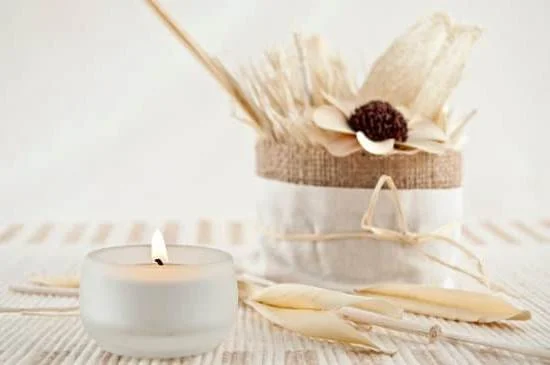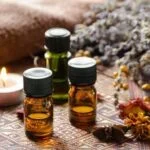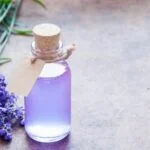Can medical marijuana be used in aromatherapy? The use of medical marijuana has expanded beyond traditional methods, with a growing interest in alternative approaches such as aromatherapy. This section will delve into the science behind aromatherapy and how it relates to the use of medical marijuana, exploring the potential benefits, safety considerations, and methods of application.
Aromatherapy is the practice of using essential oils and plant extracts to promote overall well-being, often through inhalation or topical application. The sense of smell plays a significant role in how our brain functions, and this section will explore how aromatherapy affects brain function and emotional states. The question remains: can medical marijuana be used in a similar manner to other essential oils for therapeutic purposes?
As the legalization and acceptance of medical marijuana continue to grow, there is a curiosity about its potential benefits when incorporated into aromatherapy practices. This section will provide an overview of the potential benefits of using medical marijuana in aromatherapy, including its reported effects on stress reduction, pain management, and relaxation. Additionally, we will discuss what research says about this controversial topic and whether it holds promise for future applications.
The Science of Aromatherapy
Aromatherapy, the practice of using natural plant extracts to promote health and well-being, has gained popularity in recent years. One of the key aspects of aromatherapy is the science behind how smell affects brain function. When essential oils are inhaled, the molecules travel through the nasal passage and interact with olfactory receptors, sending signals to the brain’s limbic system. This part of the brain is responsible for emotions, behavior, motivation, and long-term memory.
The limbic system’s response to different scents can result in various effects on mood and overall well-being. For example, lavender is often used in aromatherapy for its calming properties, while peppermint may be used for its invigorating effects. These scents can trigger responses such as relaxation or increased alertness, demonstrating the powerful impact of smell on brain function.
- Essential oils such as lavender
- Peppermint oil
- Lemon oil
Additionally, certain scents can also affect physiological functions such as heart rate, blood pressure, and respiratory patterns. This connection between smell and bodily responses has led to research exploring the potential therapeutic benefits of aromatherapy using medical marijuana.
While medical marijuana is primarily associated with its use in treating symptoms related to chronic pain, epilepsy, and cancer, there is growing interest in whether it can be incorporated into aromatherapy practices to enhance its therapeutic effects.
This H2 Section Includes
- An explanation of how smell affects brain function
- Examples of essential oils commonly used in aromatherapy
- A mention of research into incorporating medical marijuana into aromatherapy practices
Exploring the Potential Benefits of Medical Marijuana in Aromatherapy
Understanding the Therapeutic Properties of Medical Marijuana
Medical marijuana, also known as medical cannabis, has been gaining attention for its potential therapeutic benefits. The plant contains active compounds called cannabinoids, such as THC and CBD, which have been found to have various medicinal properties. These cannabinoids are believed to interact with the body’s endocannabinoid system, which plays a crucial role in regulating functions such as pain, mood, appetite, and memory. When used in aromatherapy, the therapeutic properties of medical marijuana can potentially be harnessed through inhalation.
Potential Benefits of Aromatherapy Using Medical Marijuana
Aromatherapy using medical marijuana may offer several potential benefits for both physical and mental well-being. Some proponents believe that inhaling the aroma of certain strains of medical marijuana can help alleviate symptoms related to conditions such as chronic pain, anxiety, depression, and insomnia. Additionally, the relaxing effect of certain cannabis terpenes when inhaled through aromatherapy
Possible Therapeutic Applications
Research on the specific therapeutic applications of using medical marijuana in aromatherapy is still limited. However, some studies have suggested that certain cannabis terpenes and cannabinoids may possess anti-inflammatory, analgesic, anxiolytic, and sedative properties when inhaled.
This has led to increased interest in exploring the potential use of medical marijuana in aromatherapy as a complementary therapy for conditions such as chronic pain management and mental health disorders. As our understanding of the therapeutic effects of medical marijuana expands, further research into its potential applications in aromatherapy may provide valuable insights into its utility for promoting overall wellness.
Safety and Legal Considerations
The use of medical marijuana in aromatherapy presents several safety and legal considerations that must be taken into account. It is important to understand the potential risks and legalities surrounding the use of medical marijuana in aromatherapy before incorporating it into your wellness routine.
Legal Considerations
In many regions, the use of medical marijuana is strictly regulated or even illegal. Before using medical marijuana in aromatherapy, it is crucial to research and understand the laws and regulations in your area. This includes obtaining a prescription or medical card from a qualified healthcare professional, as well as purchasing from licensed dispensaries or providers.
Safety Considerations
When using medical marijuana in aromatherapy, it is essential to ensure that you are using quality, lab-tested products. Contaminants such as pesticides, heavy metals, and mold can pose serious health risks when inhaled or applied topically. Additionally, individuals with respiratory conditions should exercise caution when inhaling cannabis vapor as it can potentially exacerbate their symptoms.
Consulting With a Healthcare Professional
Before incorporating medical marijuana into your aromatherapy practice, it is advisable to consult with a healthcare professional, particularly if you have underlying health conditions or are taking other medications. A qualified healthcare provider can provide personalized advice and guidance on how to safely integrate medical marijuana into your wellness routine.
It is important for individuals to thoroughly research and understand both the legal and safety considerations before using medical marijuana in aromatherapy to ensure safe and responsible usage. Seeking guidance from healthcare professionals can provide valuable insights specific to individual health needs and concerns.
Methods of Using Medical Marijuana in Aromatherapy
Aromatherapy is a holistic healing treatment that uses natural plant extracts to promote health and well-being. These plant extracts, commonly known as essential oils, are believed to have therapeutic properties that can help to improve physical, mental, and emotional health. With the increasing popularity and acceptance of medical marijuana, there has been growing interest in using cannabis extracts in aromatherapy. But can medical marijuana be used in aromatherapy?
The answer is yes. Medical marijuana can indeed be used in aromatherapy. The cannabinoids found in marijuana, such as THC and CBD, have been shown to have potential therapeutic effects when inhaled or absorbed through the skin. When combined with other essential oils, medical marijuana can enhance the overall benefits of aromatherapy. For example, the calming effects of lavender essential oil may be amplified when combined with a strain of medical marijuana high in CBD.
One potential benefit of using medical marijuana in aromatherapy is its ability to provide relief from pain and inflammation. When used topically or inhaled through a diffuser, cannabinoids like CBD can interact with the body’s endocannabinoid system to help alleviate chronic pain conditions such as arthritis or fibromyalgia. Additionally, medical marijuana may also have anti-anxiety and anti-depressant effects when used in aromatherapy, making it a promising option for individuals struggling with mental health issues.
| Potential Benefits | Example |
|---|---|
| Pain relief and inflammation reduction | Alleviation of chronic pain conditions like arthritis |
| Anti-anxiety and anti-depressant effects | Helping individuals struggling with mental health issues |
Potential Risks and Side Effects of Using Medical Marijuana in Aromatherapy
One potential risk of using medical marijuana in aromatherapy is the possibility of allergic reactions. While many people can safely use essential oils and cannabis products, some individuals may be sensitive or allergic to certain compounds found in these substances. This could result in skin irritation, respiratory issues, or other adverse reactions. It’s important for users to perform a patch test before using any new essential oil or cannabis product, especially when combining the two in aromatherapy.
Another risk to consider is the potential for overuse or misuse of medical marijuana in aromatherapy. As with any therapeutic substance, there is a risk of dependency or psychological reliance on the effects of cannabis and essential oils. Using too much of these products can also lead to unwanted side effects such as dizziness, nausea, or impaired cognitive function. It’s crucial for individuals to use medical marijuana in aromatherapy responsibly and under the guidance of a knowledgeable healthcare professional.
In addition, legal considerations must be taken into account when using medical marijuana in aromatherapy. While cannabis products may be legal for medicinal use in some regions, there are strict regulations regarding how they can be obtained and used. Users must ensure that they are following all applicable laws and regulations when incorporating medical marijuana into their aromatherapy practice to avoid legal repercussions.
| Potential Risks | Side Effects |
|---|---|
| Allergic reactions | Skin irritation, respiratory issues |
| Overuse or misuse | Dependency, unwanted side effects like dizziness |
| Legal considerations | Strict regulations regarding medicinal use |
Case Studies and Personal Experiences
Many individuals have reported positive experiences using medical marijuana in aromatherapy, with some claiming it has helped alleviate symptoms of various health conditions. These personal accounts provide valuable insight into the potential benefits and effects of integrating medical marijuana into aromatherapy practices. Below are real-life examples of individuals who have used medical marijuana in aromatherapy and their experiences:
- Case Study 1: Sarah, a chronic pain sufferer, began using a cannabis-infused essential oil in her diffuser during her meditation sessions. She reported feeling a significant reduction in her pain levels and an overall sense of relaxation.
- Case Study 2: John, who struggles with anxiety and insomnia, started applying a cannabis-based topical cream as part of his nighttime routine. He found that the aroma of the cream helped him relax, leading to improved sleep quality and reduced anxiety symptoms.
- Case Study 3: Maria, a cancer patient undergoing chemotherapy, incorporated cannabis essential oil into her self-care regimen. She noticed an improvement in her nausea and appetite, as well as a boost in her overall mood.
These case studies highlight the potential benefits that individuals can experience when using medical marijuana in aromatherapy. While these are anecdotal accounts and not scientifically proven results, they showcase the diverse ways in which medical marijuana can be integrated into aromatherapy practices to potentially enhance well-being.
It’s important to note that personal experiences with medical marijuana in aromatherapy can vary widely. The effects may depend on individual differences such as tolerance levels, sensitivity to smell, and specific health conditions. As the use of medical marijuana continues to gain acceptance and recognition for its therapeutic potential, more individuals are exploring its use in combination with aromatherapy as a natural approach to improving health and well-being.
Conclusion
As the understanding of the potential benefits of medical marijuana in aromatherapy continues to grow, many people are exploring this alternative form of treatment. The use of essential oils and natural plant extracts in aromatherapy has long been popular for its therapeutic effects, and now incorporating medical marijuana into this practice is gaining attention.
The question “can medical marijuana be used in aromatherapy” is being met with both skepticism and enthusiasm, but as research and personal experiences continue to emerge, it is clear that there is a future for this combination.
While safety and legal considerations remain a concern, advancements in legislation regarding medical marijuana have opened up new possibilities for its use. As more states legalize the use of medical marijuana, individuals are given the opportunity to explore its potential benefits in various forms, including aromatherapy. The science behind how smell affects brain function also supports the idea that incorporating medical marijuana into aromatherapy can have positive effects on mental and emotional well-being.
The future of medical marijuana in aromatherapy looks promising, with ongoing research and increasing anecdotal evidence supporting its potential benefits. As more individuals share their personal experiences and case studies demonstrate positive outcomes, the integration of medical marijuana into aromatherapy may become more widely accepted. With proper education, regulation, and further exploration into the methods of using medical marijuana in aromatherapy, this alternative form of treatment can continue to evolve and offer new possibilities for holistic healing.

Are you looking for a natural way to improve your health and wellbeing?
If so, aromatherapy may be the answer for you.





